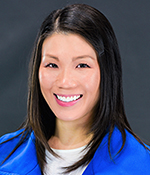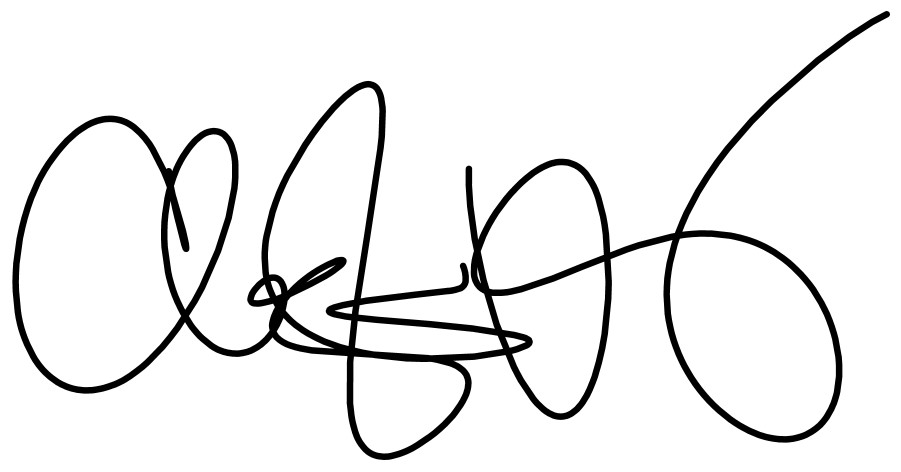President’s Message
“Spiderwebs and Second Chances”

Christina Y. Weng, MD, MBA
In college, I desperately wanted to be an a cappella singer. Don’t get me wrong; I knew who I was at my core and was pre-med all the way. But that didn’t quell my desire to be part of one of those tight-knit shoo-bee-doo singing groups producing euphonious harmony together. So when I saw a flyer announcing open auditions for a popular singing group on campus, I excitedly ripped off a save-the-date tab. This was my chance.
For the next several weeks, I made a one-mile trek across campus to go practice in a special sound-proof room designed for music majors. I chose No Doubt’s “Spiderwebs” as my audition song, and rehearsed its melodically complex B♭–F–Gm–E♭ chord progression night after night before heading back to my dorm to finish my organic chemistry homework.
Audition day arrived. When I got to the building, I found myself surrounded by 25 other students performing vocal warm-ups in the waiting room. They sounded like professionals; I was an amateur at best. I thought about leaving right then and there, but hope is a powerful force. After my audition, they thanked me for coming and told me that the results would be posted outside the building at 7 o’clock that evening.
At a quarter to seven, I bundled up and walked a mile in the snow for the second time that day. Deep down, I already knew that I wouldn’t make the cut, but I wanted to see it for myself. When I arrived, there was a small group gathered around the wooden door. On my tiptoes, I scanned the list for my name—it wasn’t there.
I never became an a cappella singer. But I learned a lot of valuable lessons aside from organic chemistry that semester. While this experience taught me about determination and disappointment, the most important realization was this: Each of us is blessed with certain strengths—find yours and rely on others for the rest. I didn’t find mine at a cappella tryouts, but I did later discover my aptitude in other areas. Even so, I recognized early on that no matter how good I was at something, what I could achieve alone never surpassed what I was able to achieve collaborating with others whose strengths complemented my own. A team approach wins every time, and I’m stepping into my presidency year reminded of that.
The year 2019 was a historic first where more women than men (50.5% vs 49.4%) matriculated into medical school. Some of them will be pursuing ophthalmology, supporting the upward movement of female ophthalmology resident representation which has increased from 29% in 2000 to 41% in 2020. Despite this growth, gender disparities persist in spaces like clinical trial leadership, academic department chair positions, meeting podium presentations, journal editorial board roles, industry funding, and wage compensation. The drivers behind these gaps are multifactorial and complex, and although it is certainly encouraging that some of them have narrowed in recent years, the opportunity for continued progress is calling. Women in Ophthalmology (WIO) is answering—loudly.
Thanks to you all, WIO has experienced unparalleled growth in terms of membership, meeting attendance, and engagement. Initiatives such as the Clinical Trials Training Program, Mentorship Program, and Speakers Bureau exemplify WIO’s commitment to tackling some of the aforementioned disparities. Our WIO webinars foster cross-pollination on topics like practice partnership and work-life integration. And of course there’s WIO’s crown jewel, the Summer Symposium, which drew a record 1,265 participants last year! The Program Committee (headed by 2024 co-chairs Anna Momont & Janet Alexander) devotes countless hours year-round to develop an outstanding event so that we can learn about the latest scientific advancements; so that we can share skills and exchange ideas; so that trainees can see speakers who look like them up on the podium; so that we can candidly discuss issues like workplace diversity and maternity leave; and perhaps most importantly, so that we can empower and inspire one another. The connections formed at our annual meeting open professional doors, break glass ceilings, and blossom into lifelong friendships; I know because I have both witnessed and experienced it.
I want to take a moment to introduce the 2024 WIO Board of Directors: Lisa Nijm (CEO), Grace Sun, Purnima Patel, Kimberly Winges, Nataliya Danylkova, Lejla Vajzovic, Usiwoma Abugo, Sophie Bakri, Laura Enyedi, Andrea Kossler, Cynthia Bradford, Sophia Chung, and Lori Provencher. I admire these amazing women so much, and am very grateful to have the opportunity to work alongside them over the coming year. There is a lot I would like to achieve during my presidency, but I cannot do it alone. While I promise to exercise my strengths, I will also lean on each one of you for yours. Whether it be by participating on a committee, bringing a new attendee to Summer Symposium, or elevating a fellow woman in ophthalmology, know that you can make a meaningful impact as a WIO member.
Being part of an a cappella group wasn’t in the cards for me in college, but in a roundabout way, I feel like I’m about to get my second chance. After all, an a cappella group is simply a bunch of talented, dedicated people whose collective strengths create something infinitely more beautiful than any of its individual parts. Sounds a lot like our organization if you ask me.
It is a true honor and privilege to serve you as the 2024 WIO President. Thank you for all the incredible things that I know we are going to accomplish this year together. Thank you for singing with me.
With gratitude,

Christina Y. Weng, MD, MBA
———————————————————
References
Aguwa UT, Srikumaran D, Green LK, Potts JR 3rd, Canner J, Fountain TR, Sun G, Woreta FA. Analysis of Sex Diversity Trends Among Ophthalmology Match Applicants, Residents, and Clinical Faculty. JAMA Ophthalmol. 2021 Nov 1;139(11):1184-90.
Azad AD, Chandramohan A, Li AS, Rosenblatt TR, Reeves MR, Veerappan-Pasricha M, Ludwig CA, Nguyen A, Winges KM, Wang SY, Pan CK, Moss HE, Do DV, Fountain TR, Kossler AL. Representation of Women in Ophthalmology Subspecialty Societies over 20 Years. Ophthalmology. 2022 May;129(5):587-90.
Boyle P. More women than men are enrolled in medical school. Association of American Medical Colleges. Accessed December 3, 2023. https://www.aamc.org/news-insights/more-women-men-are-enrolled-medical-school.
Emami-Naeini P, Lieng MK, Chen J. Sex Differences in Salaries of Academic Ophthalmologists in the United States. JAMA Ophthalmol. 2022 May 1;140(5):519-22.
Fathy CA, Cherkas E, Shields CN, Syed ZA, Haller JA, Zhang QE, Sharpe J, Garg Shukla A. Female Editorial Authorship Trends in High-Impact Ophthalmology Journals. JAMA Ophthalmol. 2021 Oct 1;139(10):1071-8.
Gill HK, Niederer RL, Shriver EM, Gordon LK, Coleman AL, Danesh-Meyer HV. An Eye on Gender Equality: A Review of the Evolving Role and Representation of Women in Ophthalmology. Am J Ophthalmol. 2022 Apr;236:232-40.
Jia JS, Lazzaro A, Lidder AK, Elgin C, Alcantara-Castillo J, Gedde SJ, Khouri AS, Garg Shukla A, Sperber LTD, Law JC, Modi YS, Kim ET, SooHoo JR, Winn BJ, Chen RW, Al-Aswad LA. Gender Compensation Gap for Ophthalmologists in the First Year of Clinical Practice. Ophthalmology. 2021 Jul;128(7):971-80.
Menard M, Ji X, Chen Q, Law JC, Baumal CR, Finn AP. Women’s Representation among Lead Investigators of Clinical Trials in Ophthalmology. Ophthalmology. 2023 Feb;130(2):223-5.
Park J, Xue Y, Lim M, Tretiakov N, Felfeli T. Representation of women in ophthalmology journal editorial boards. BMJ Open Ophthalmol. 2022 Oct;7(1):e001127.
Patel M, Salazar H, Watane A, Yannuzzi N, Bounds G, Reddy A, Bakri SJ, Sridhar J. Representation of Women in Ophthalmology Receiving Private Industry Funding 2015-2018. Am J Ophthalmol. 2022 Mar;235:56-62.
Vought R, Vought V, Lin M, Nguyen H, Szirth B, Khouri AS, Habiel M. Gender Representation Among Ophthalmology Fellowship Directors in 2022. Am J Ophthalmol. 2023 Nov 7:S0002.

